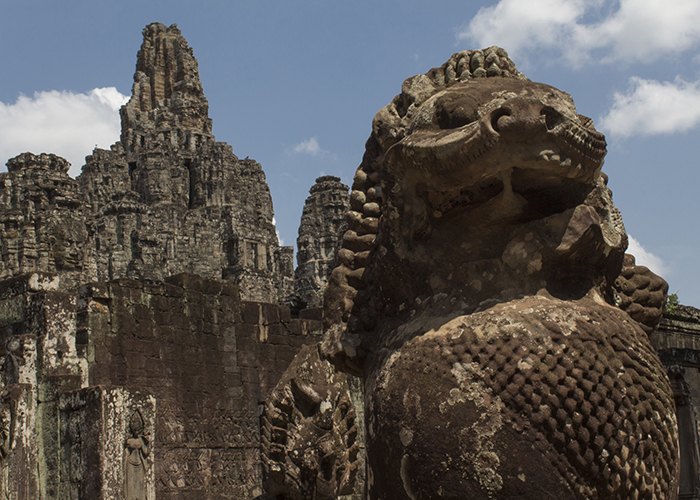 Last Leg of the Trip |
Siem Reap, CM 26.1 mi (42.0 km) |
 Next Day |
The transfer from Khao Yai National Park has gone south in more ways than one! After making us wait until 2:00 AM to drive back to Bangkok, Pla forgot to pack Mu Sab’s passport, only a few hours before our flight to Cambodia! And, to top it off, Mu Sab left the parking brake off on the car, and it slid back into a wall, mangling the back hatch! So I’m off to Cambodia alone this morning. I hope Mu Sab catches up this afternoon.
It was a short flight, only about 50 minutes, but even so, Thai Smile Airways served up a tasty snack of hot pizza rolls and fruit, wrapped up beautifully in plaid clothed box! The transfer at the Siem Reap airport went smoothly, though they make you pay extra to issue a visa if you don’t have a spare photo with you. But a van was there to pick me up, and the driver offered me a soda and a sweet-scented washcloth to refresh myself. How wonderful!
Along the way, I asked about the area, and apparently, Siem Reap has undergone a lot of changes in the last ten years, since the provincial governor started putting money into infrastructure and buildings to boost tourism! That’s good news for sure! The building where we arrived sure was lovely. Mu Sab had booked us at the Golden Temple Hotel, and boy oh boy, I have never stayed such a luxurious hotel before! Little goldfish swam under the walkway, and the check-in wait came with a silver platter of goodies, including orange-infused sticky rice! Yum!
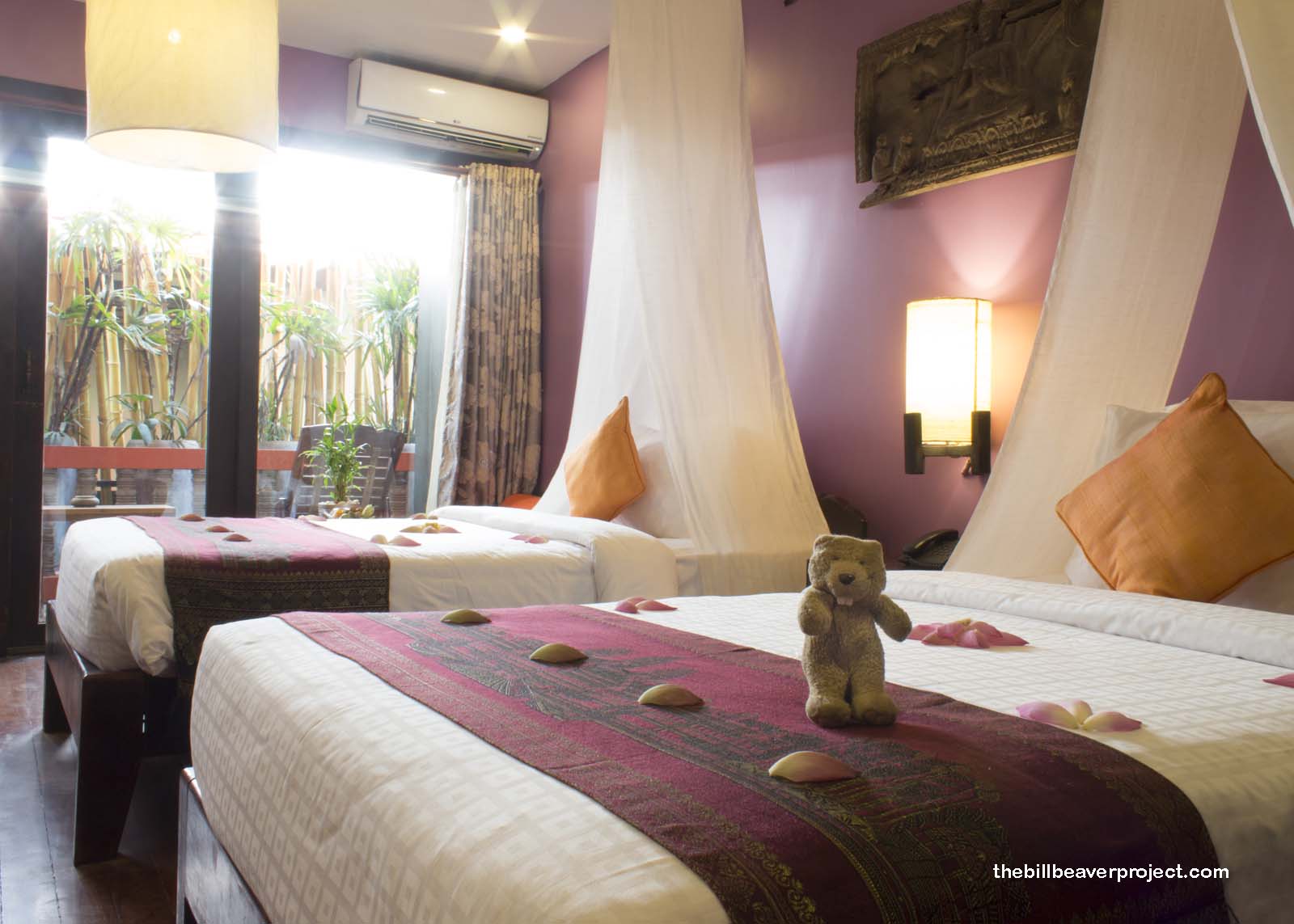 |
I could have spent more time enjoying this lovely hotel today, but I am a beaver of adventure, and still on a quest! My brother, Flatty, had spent some time here, and he’d mentioned seeing durians around town. Maybe they’d be for sale for tourists around the local temples. I hopped aboard a motor taxi called a tuk-tuk and sped north to the ancient “Magnificent City” of Angkor Thom!
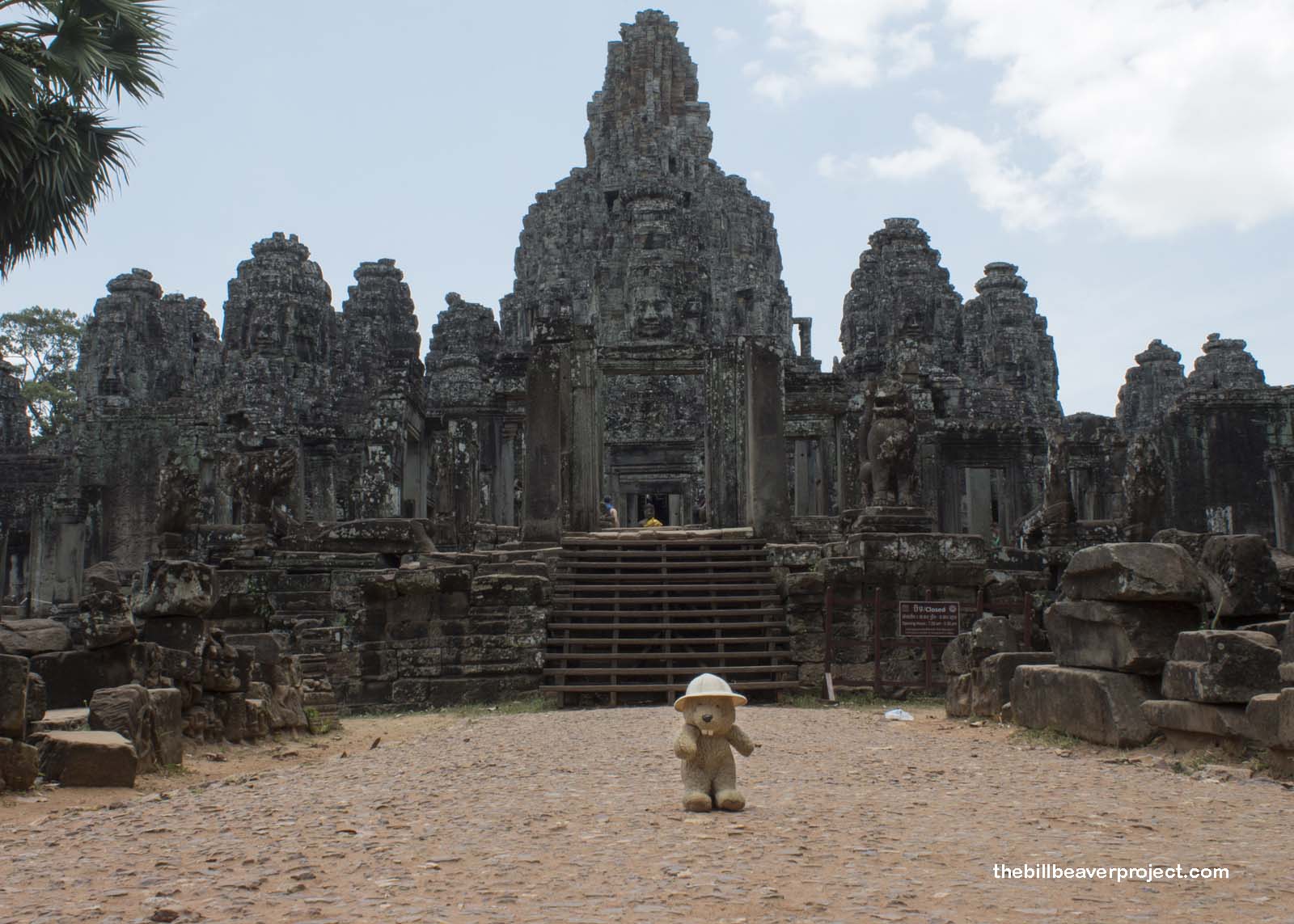 |
Angkor Thom was the heart of the massive 30-year building plan of King Jayavarman VII, who reigned from 1181 until 1218 AD. As I took in the incredible façade of its main attraction, Bayon Temple, a fellow named Yort stepped up to offer me a tour! After explaining that Angkor Wat (to be visited later) was basically shaped like a lady’s special bits and that it had taken 40,000 elephants to build it, Yort went on to show me some of the features that made Bayon, named after a banyan tree and built in honor of the Buddha, so special!
Along the walls of Bayon, carved reliefs depicted the 8th Century invasion of Cambodia by the Javan Empire! The Khmer people, depicted by long earlobes, were fleeing the invading Muslim army, portrayed by their headdresses, to the higher grounds of Phnom Kulen, where they ultimately launched a successful retaliation and created their own Khmer Empire!
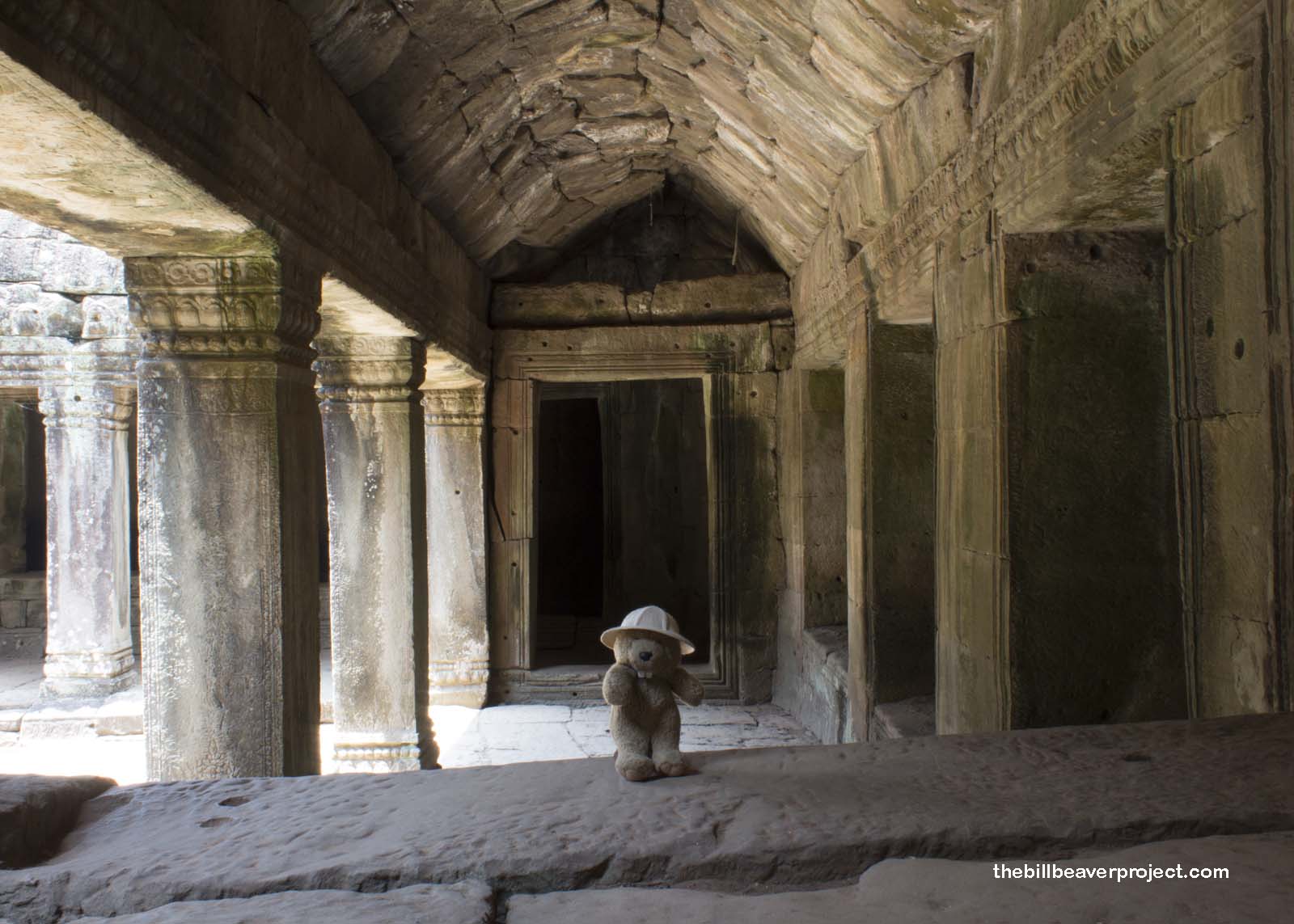 |
But Bayon Temple is most famous for its 216 carved faces, which either represent Avalokiteśvara, the bodhisattva of compassion, or the face of King Jayavarman VII himself! According to Cambodian legend, putting giant human faces on temples was a way to scare off nagas, or snakes! The mythical Leper King, who had married the daughter of the Naga King, had put faces on his temple out of anger for his father-in-law. It must have worked, because I sure didn’t encounter any snakes here!
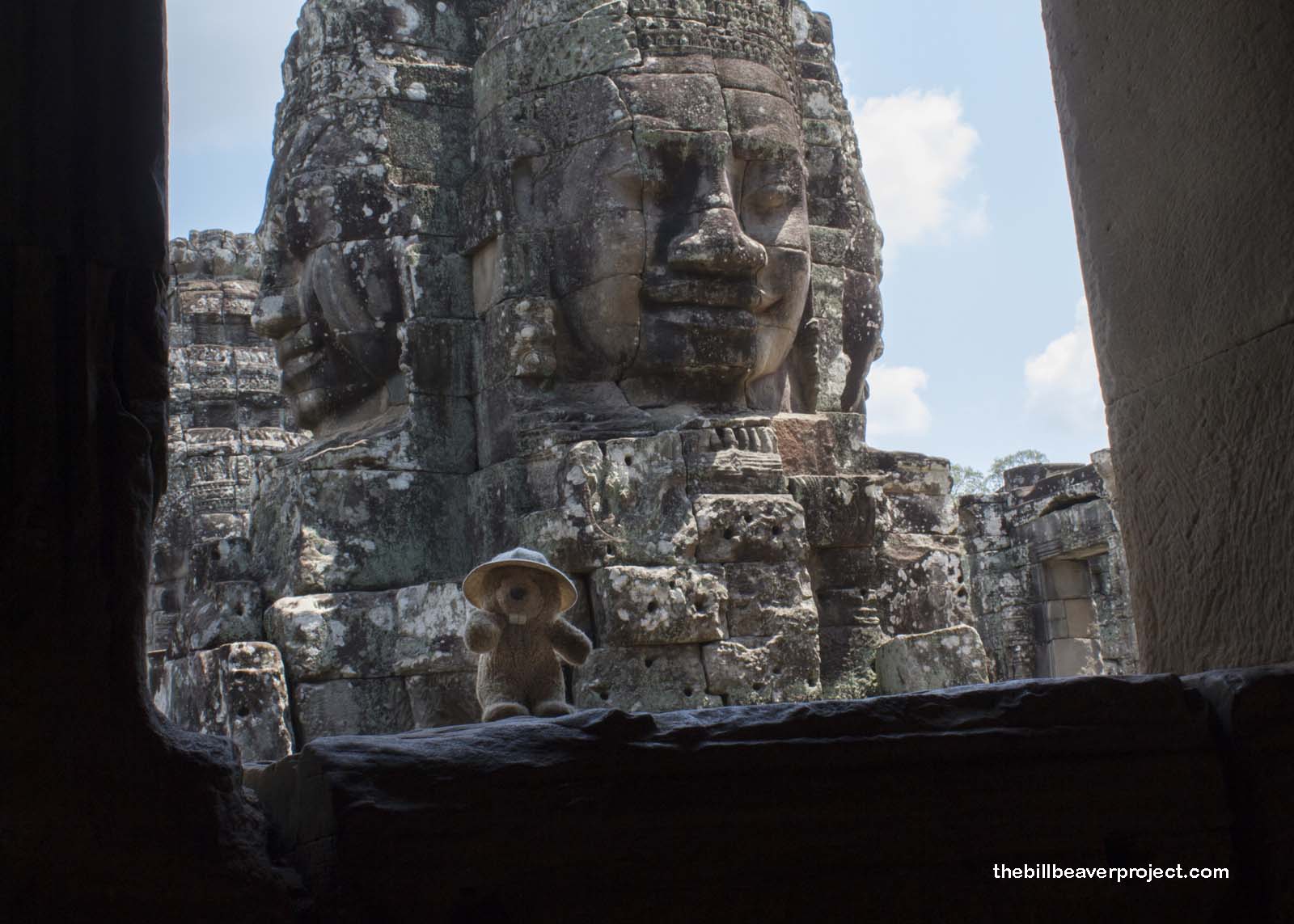 |
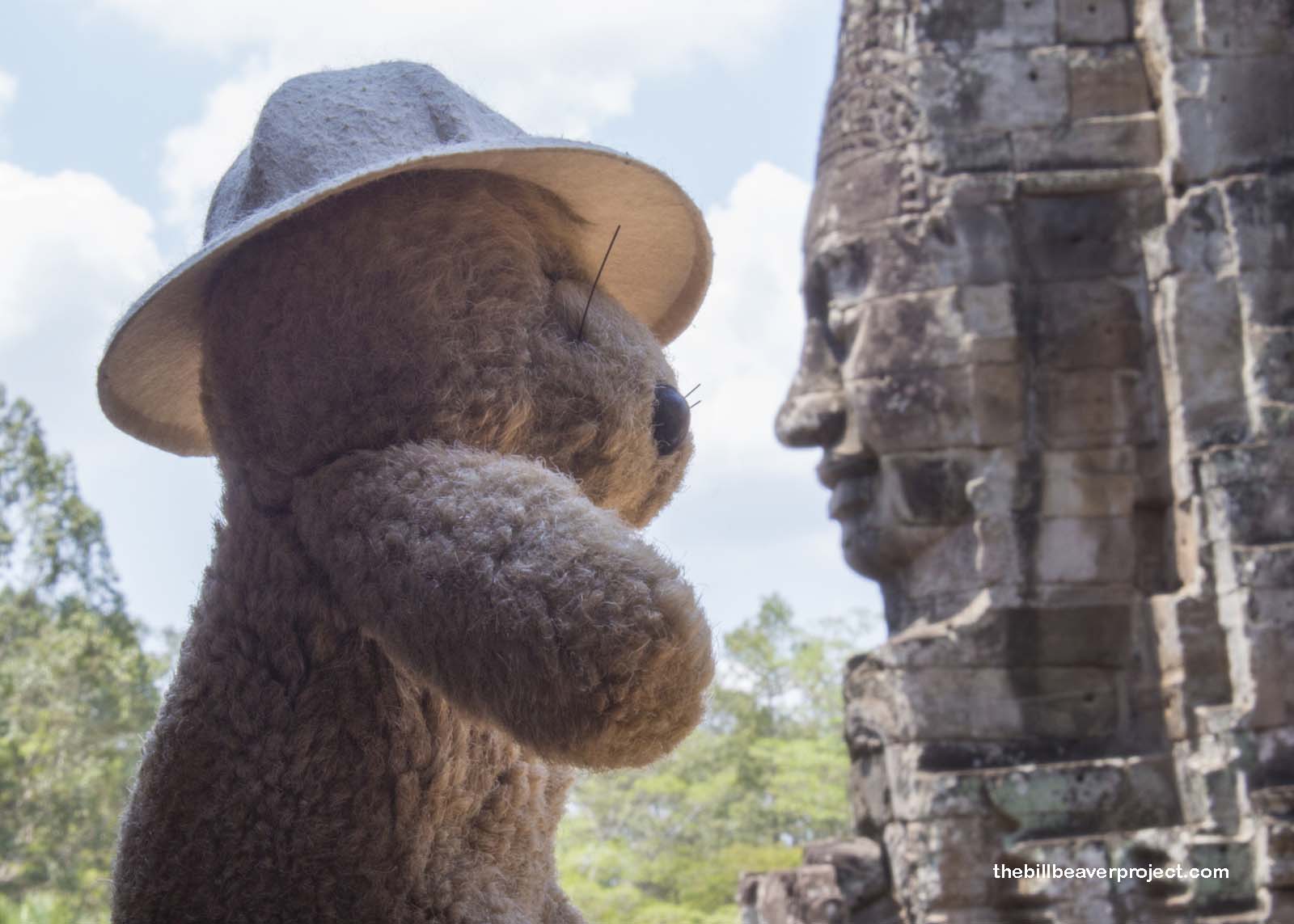 |
Over the years, different aspects of Hinduism, like the Naga (snake) and Singha (lion) were added to the décor here, but Bayon Temple still stands as a magnificent example of Buddhist architecture!
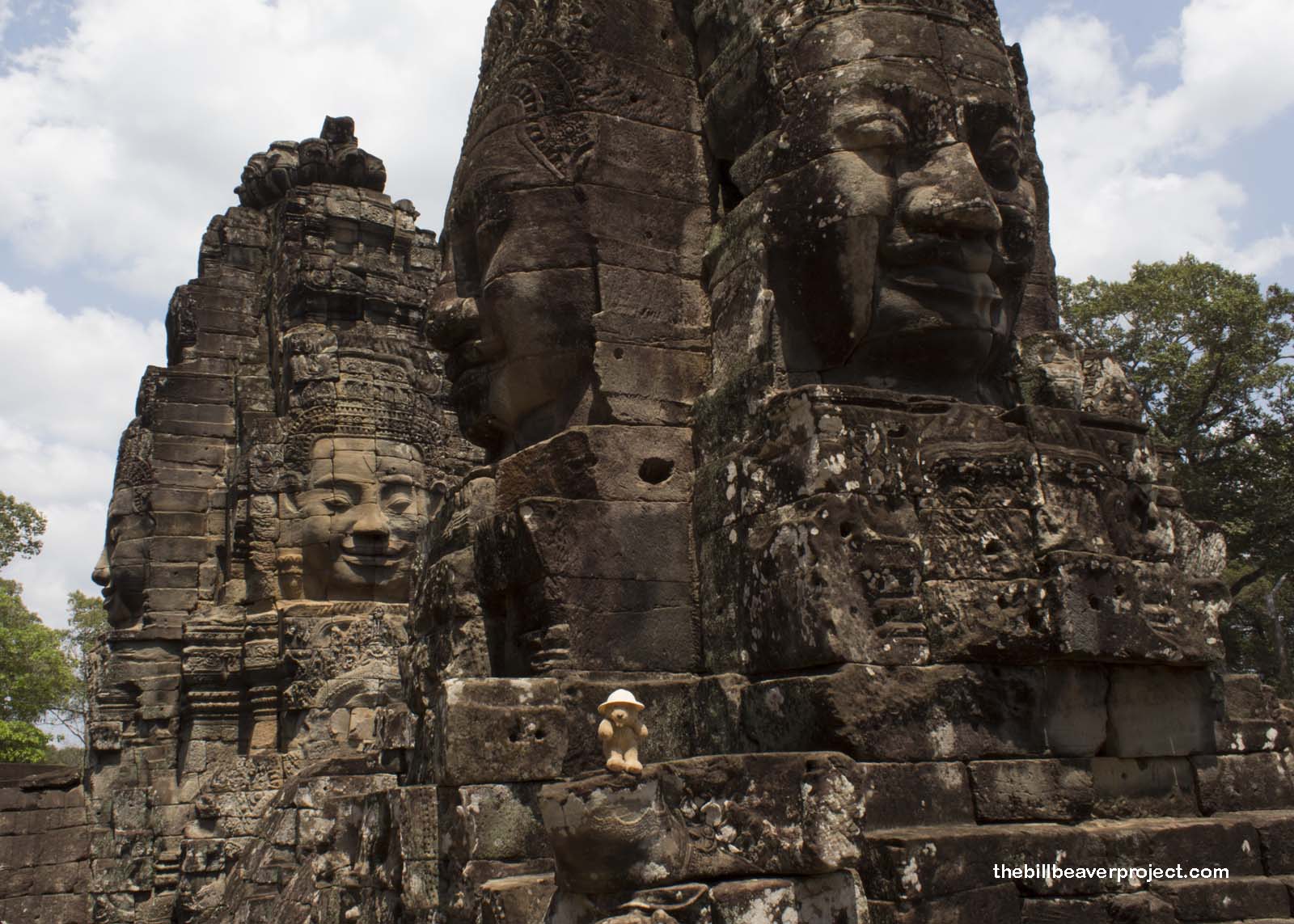 |
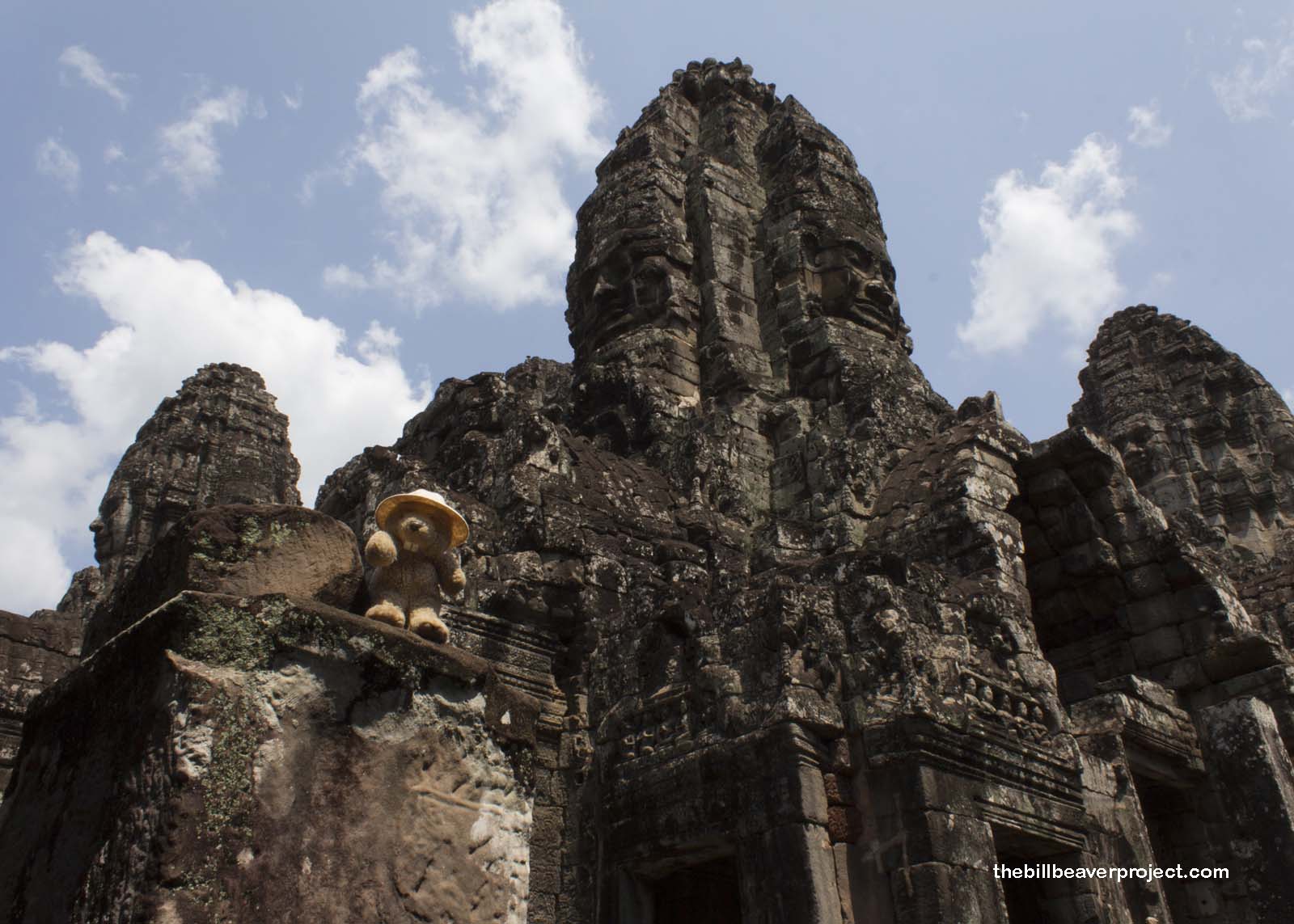 |
Conversely, just south of Bayon stands the Hindu Baphuon Temple, which was built by Udayadityavarman II to honor the god, Shiva! To get to the top of this pyramid, I had to climb some steep, hot stairs. This was the tail end of the hot, dry season in Cambodia, but it was still almost a hundred degrees with a hundred percent humidity! I was panting pretty hard, but it was worth it once I got to the top!
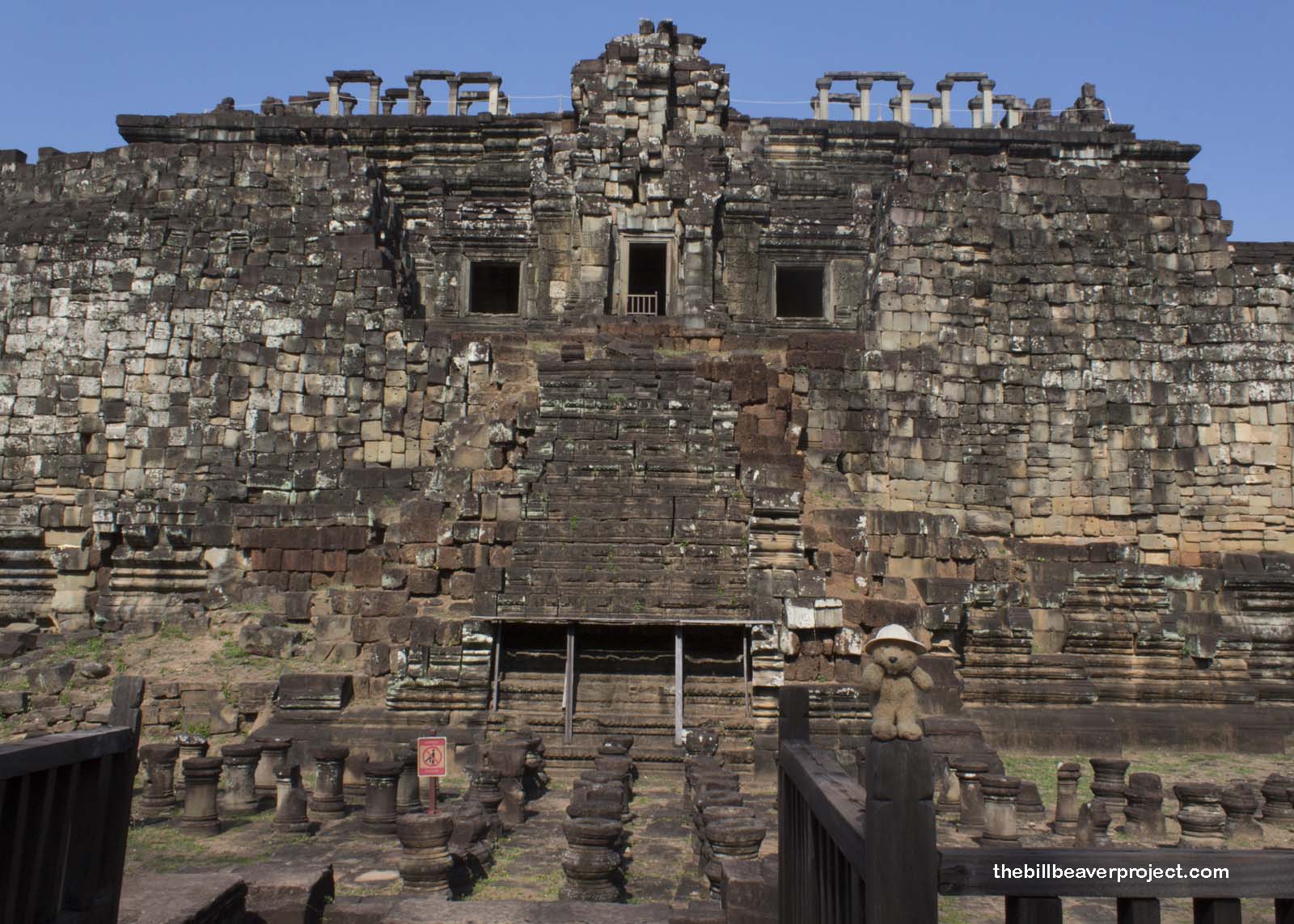 |
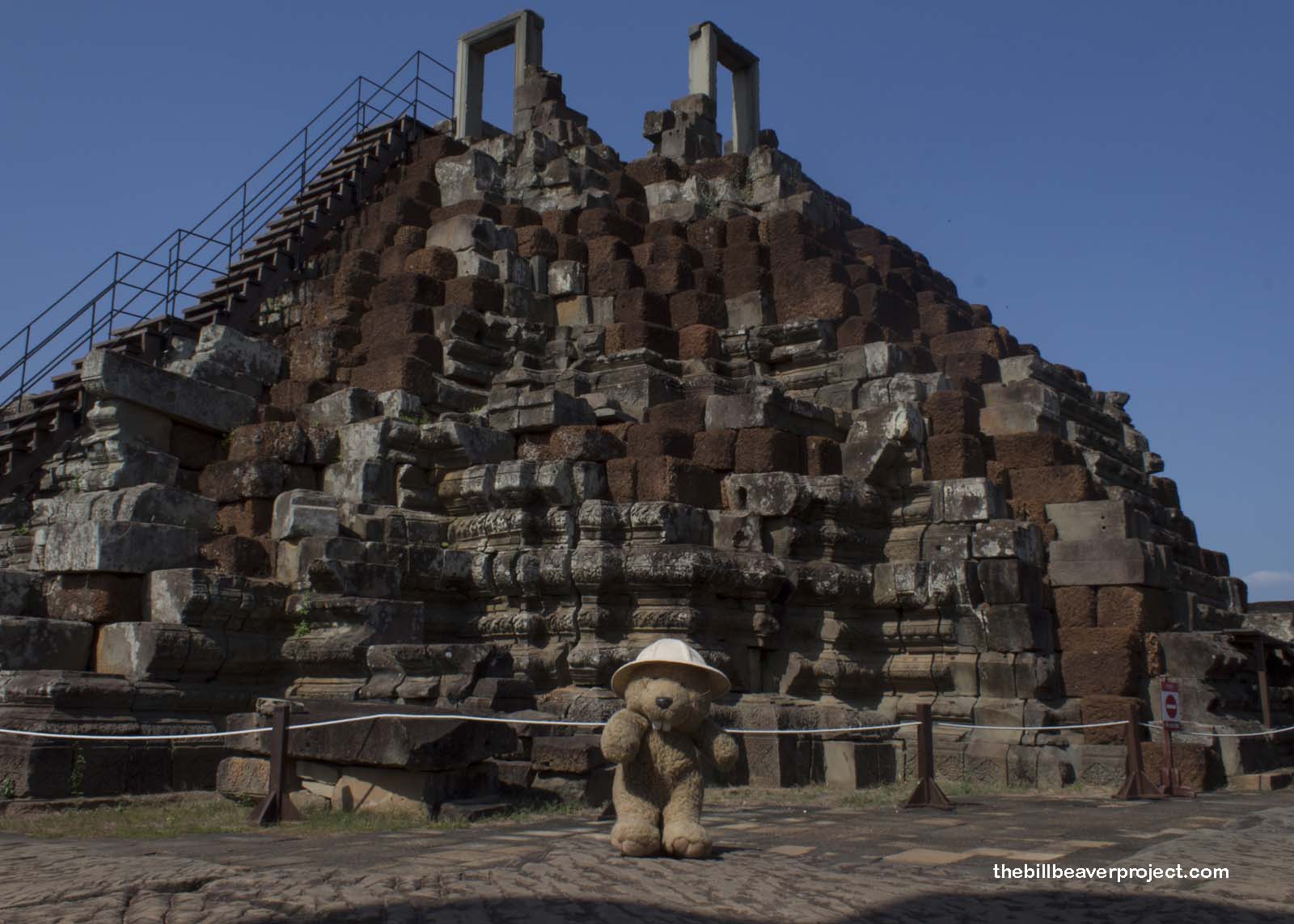 |
The windows were so intricately carved that every vista was a beautifully framed work of art! Though striking in detail, Baphuon Temple has struggled to stay upright over the years, possibly because it was built on sand! Large sections had already collapsed by the time it became a Buddhist temple in the 15th Century, but it was still nice to see that it had survived mostly intact into the present.
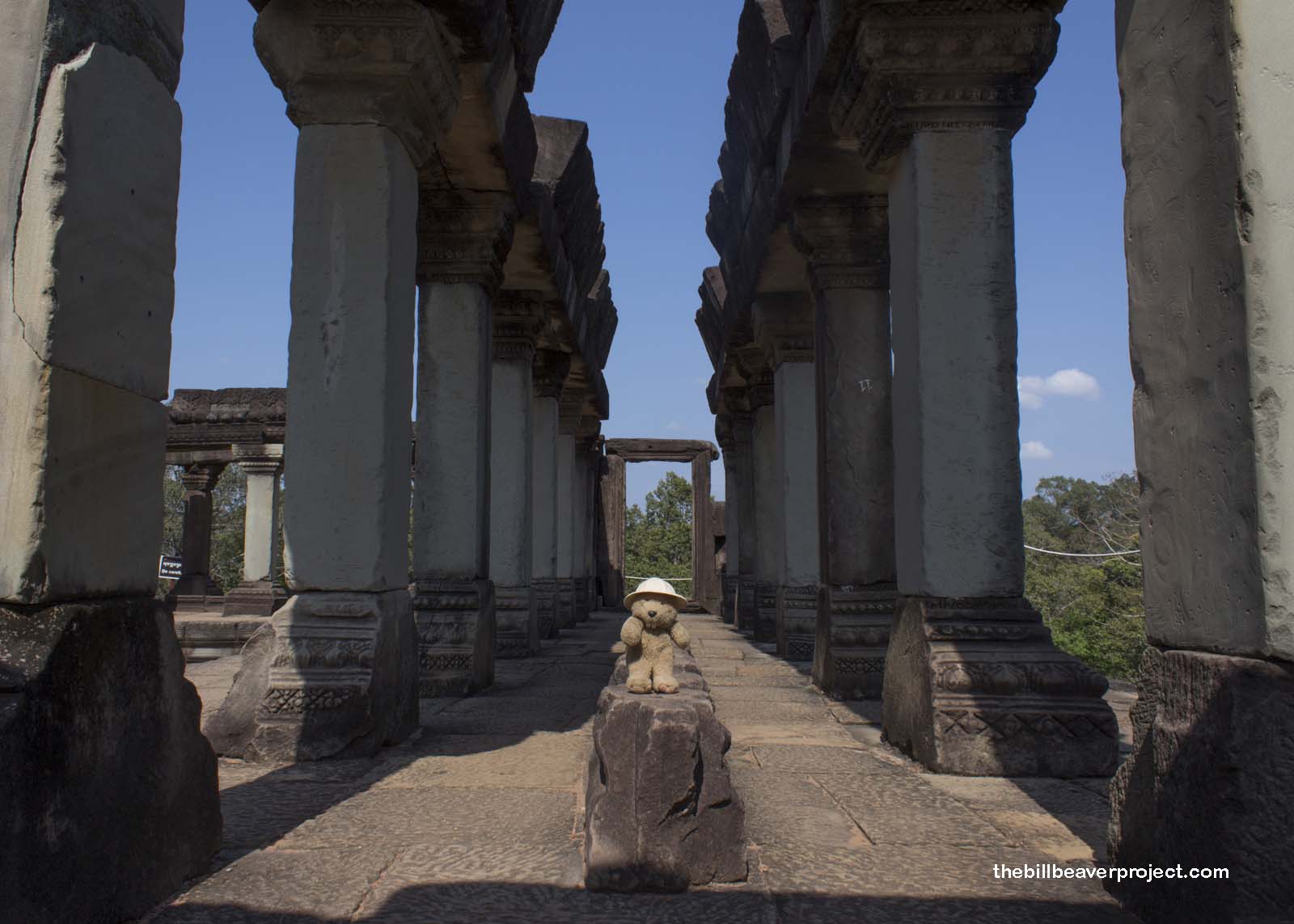 |
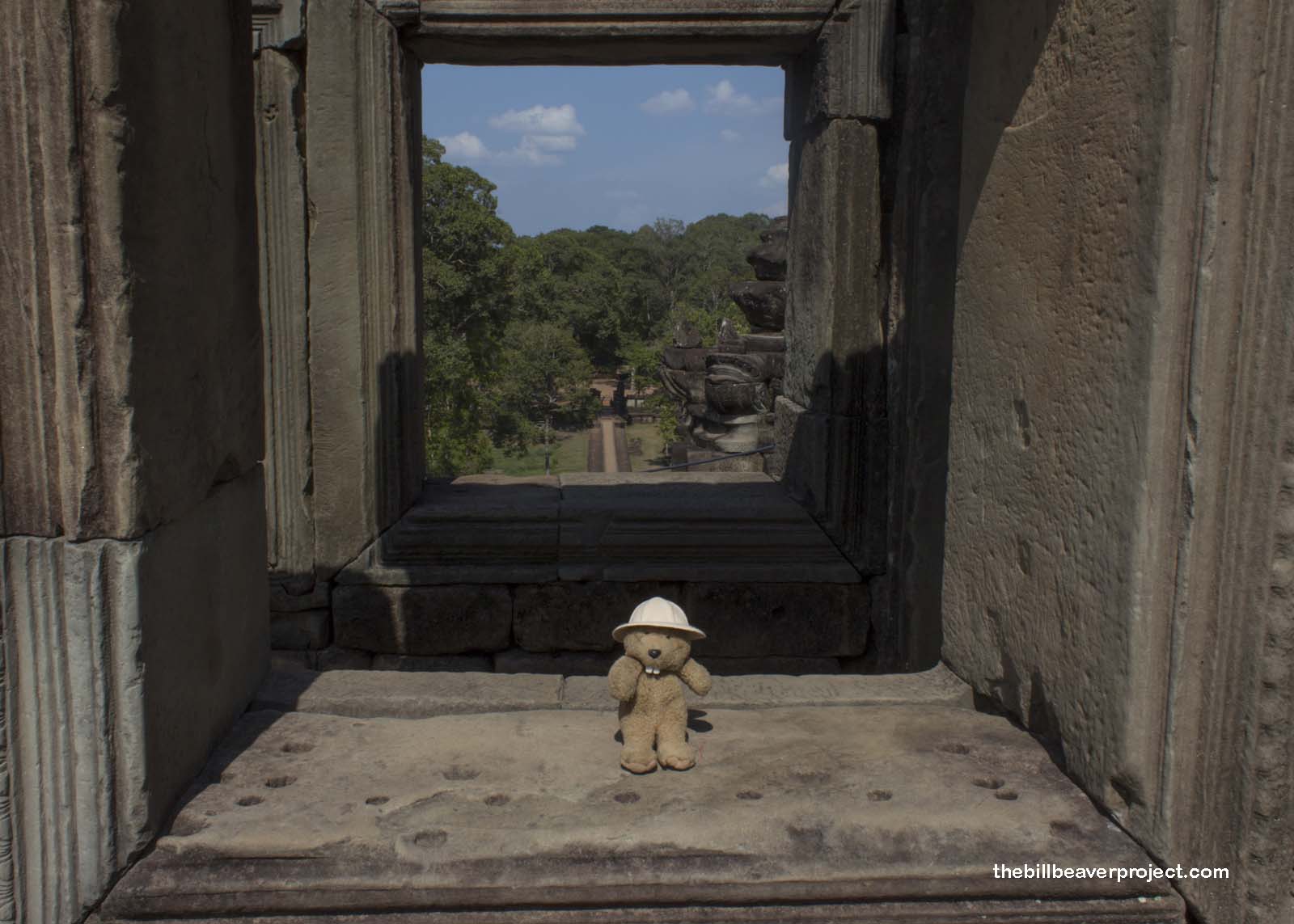 |
A short walk away, past a group of joking young Buddhist monk initiates, I encountered the Elephant Terrace, where Jayavarman VII held court with his people and where foreign diplomats came to meet the king! Beautifully carved elephants and their mahouts (riders) march in line along the whole wall, making this the perfect background for military parades and festivals!
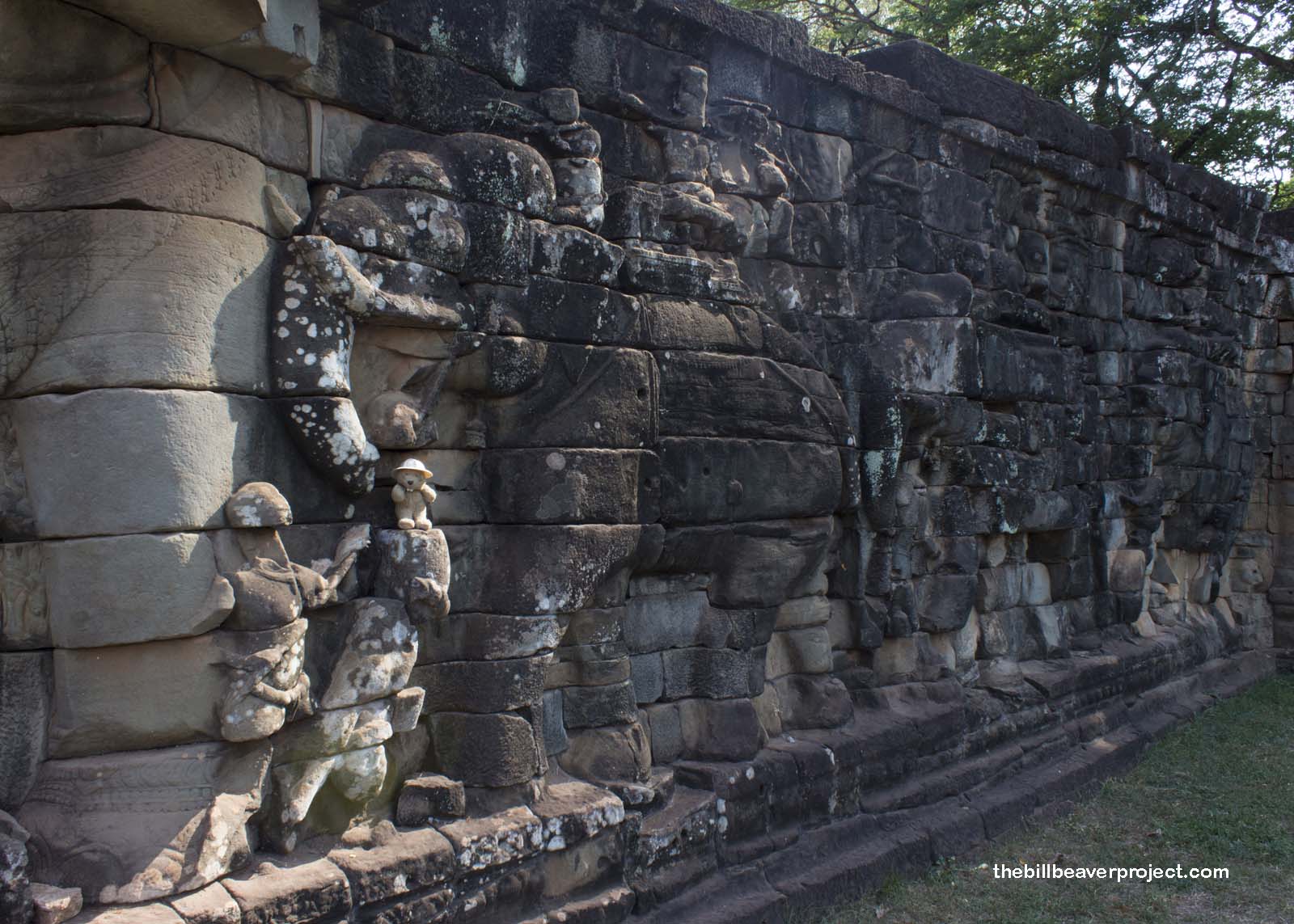 |
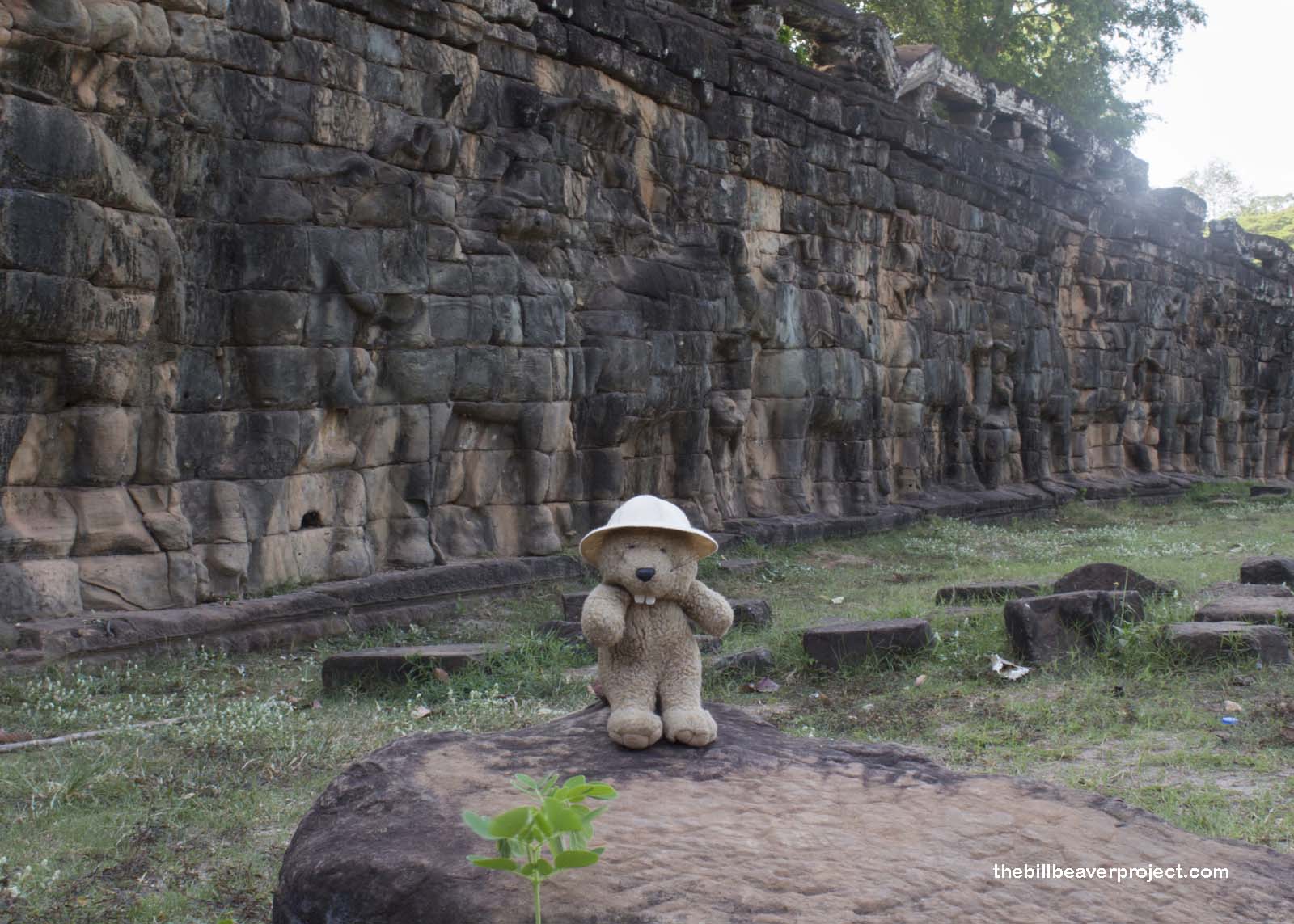 |
Just then, I got a call from the hotel to let me know that Mu Sab had arrived at last, and luckily, my tuk-tuk driver pulled up right away. On the way to meet Mu Sab at Ta Prohm, we stopped at a really sketchy-looking restaurant with no lights, no diners, and a bunch of stray dogs running around. Really nervous, I ordered the tamest thing on the menu: stir-fried noodles and veggies, and when it came out, it was incredible! Piping hot and full of flavor! I sure am glad I took the tuk-tuk taste test!
As I ate lunch, a big storm came out of nowhere. The wind blew, and the dust swirled, but the rain, once it began, was warm and gentle. I paced around the entrance to Ta Prohm, waiting for Mu Sab to appear, fending off children trying to sell me a magnet for $1, no 2 for $1, but 4 for $1! I sure was glad when the tuk-tuk bearing Mu Sab pulled up and we went inside!
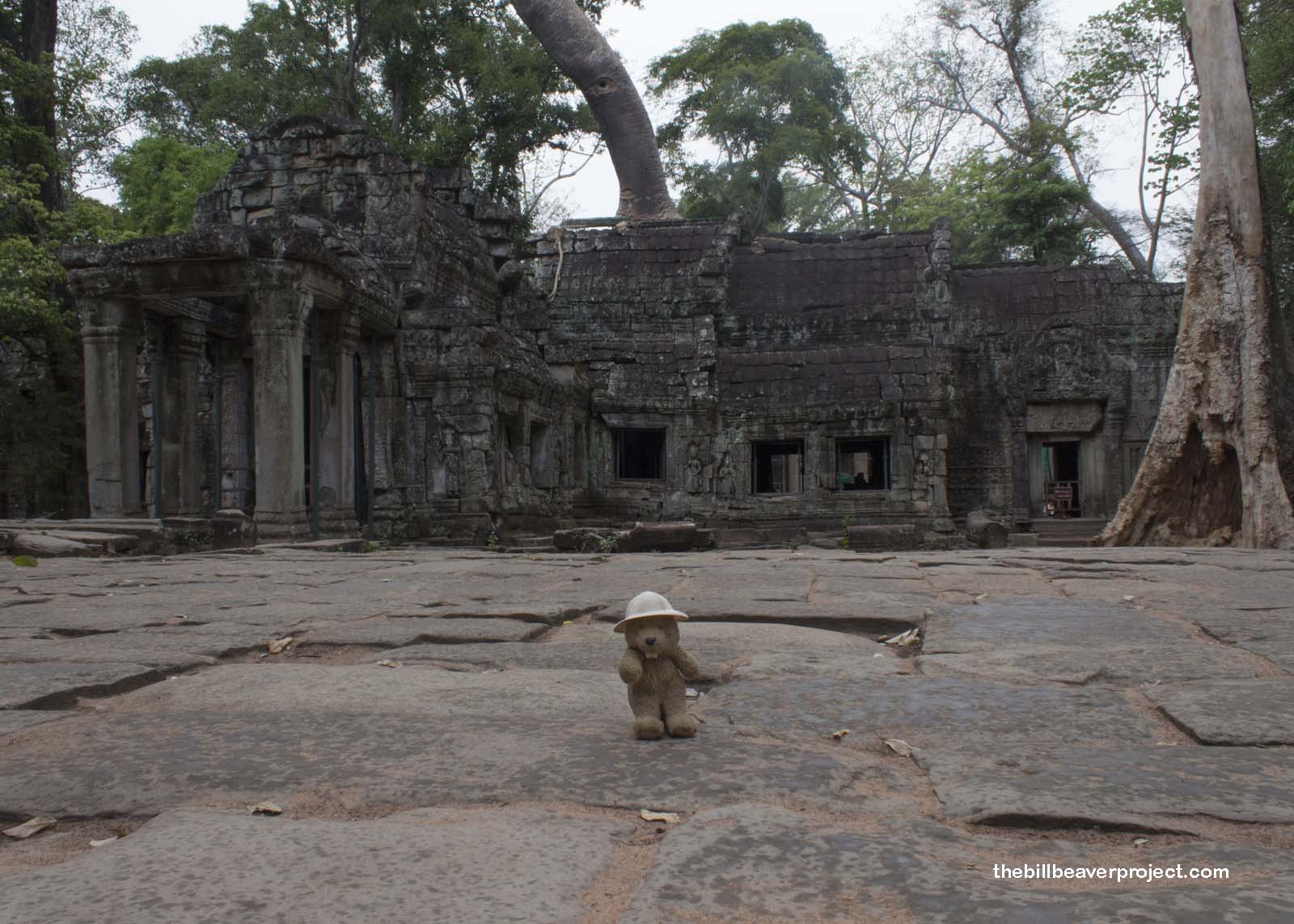 |
Ta Prohm is not as big as Bayon, but it is one of Siem Reap’s most famous temples because of how nature has fought to reclaim it. Originally it was a Buddhist monastery and university built by the same Jayavarman VII in 1186 AD in honor of his mother! Today, it is a visual poem of sandstone and strangler figs!
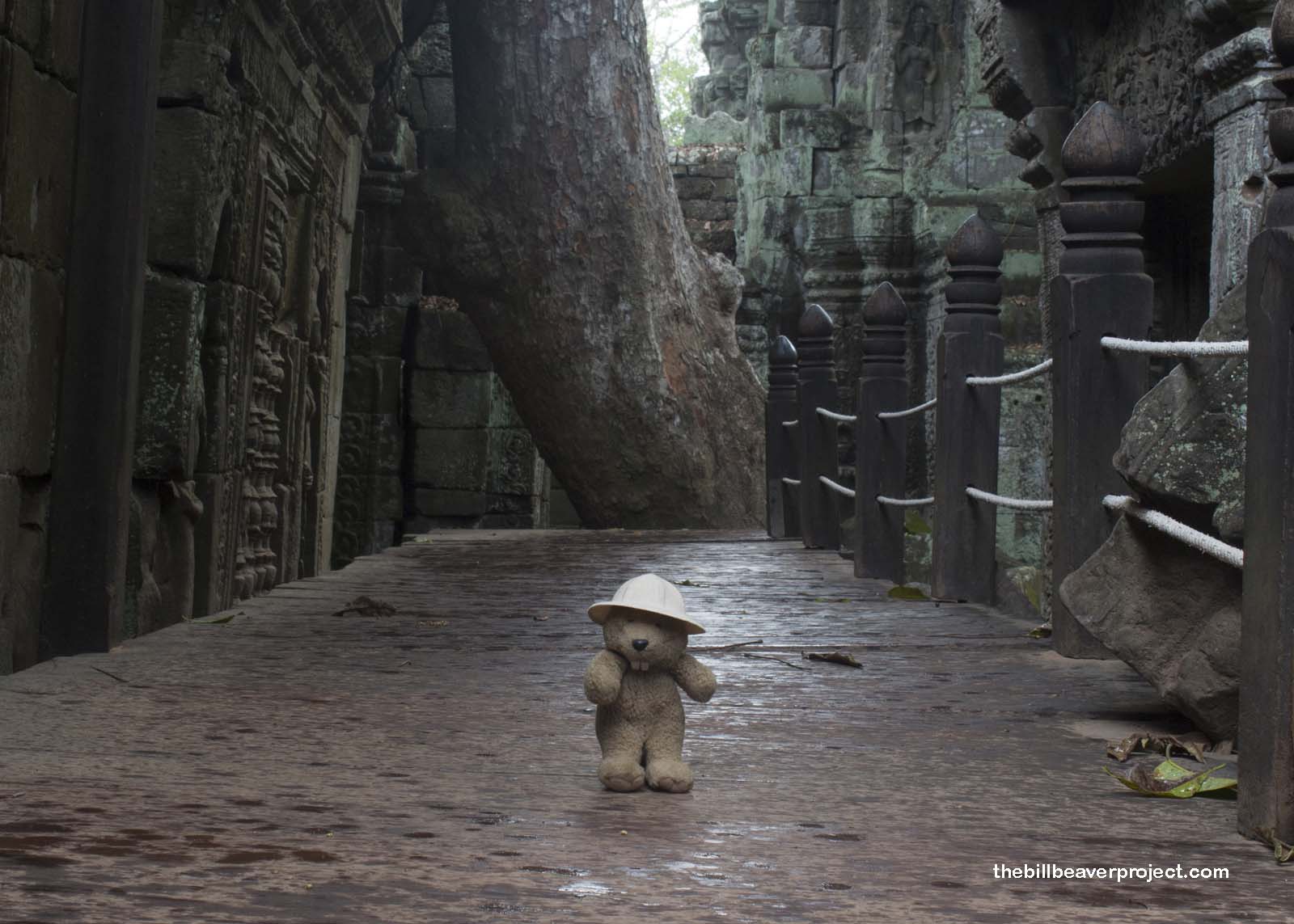 |
The rain and the time of day meant that, apart from one group of Chinese tourists, about whom every tour guide and tuk-tuk driver has complained, we had Ta Prohm to ourselves! Unlike Bayon, which was built in the shape of mountains, Ta Prohm was a flat temple, which was scrubbed of many of its Buddhist images by the Hindus that came after Jayavarman VII. Nonetheless, there were still plenty of beautiful designs peering out of the walls through the misty air. What a relief!
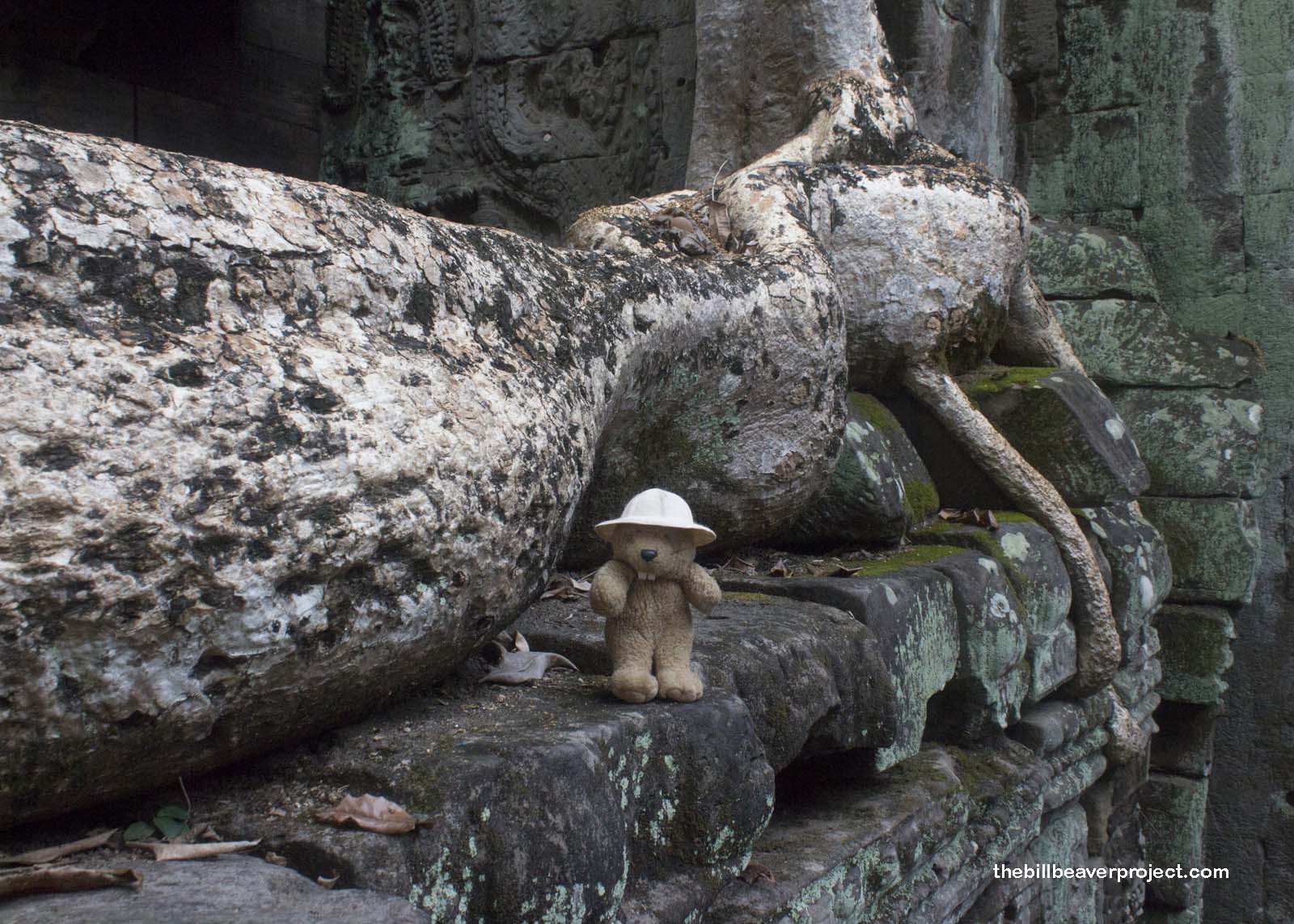 |
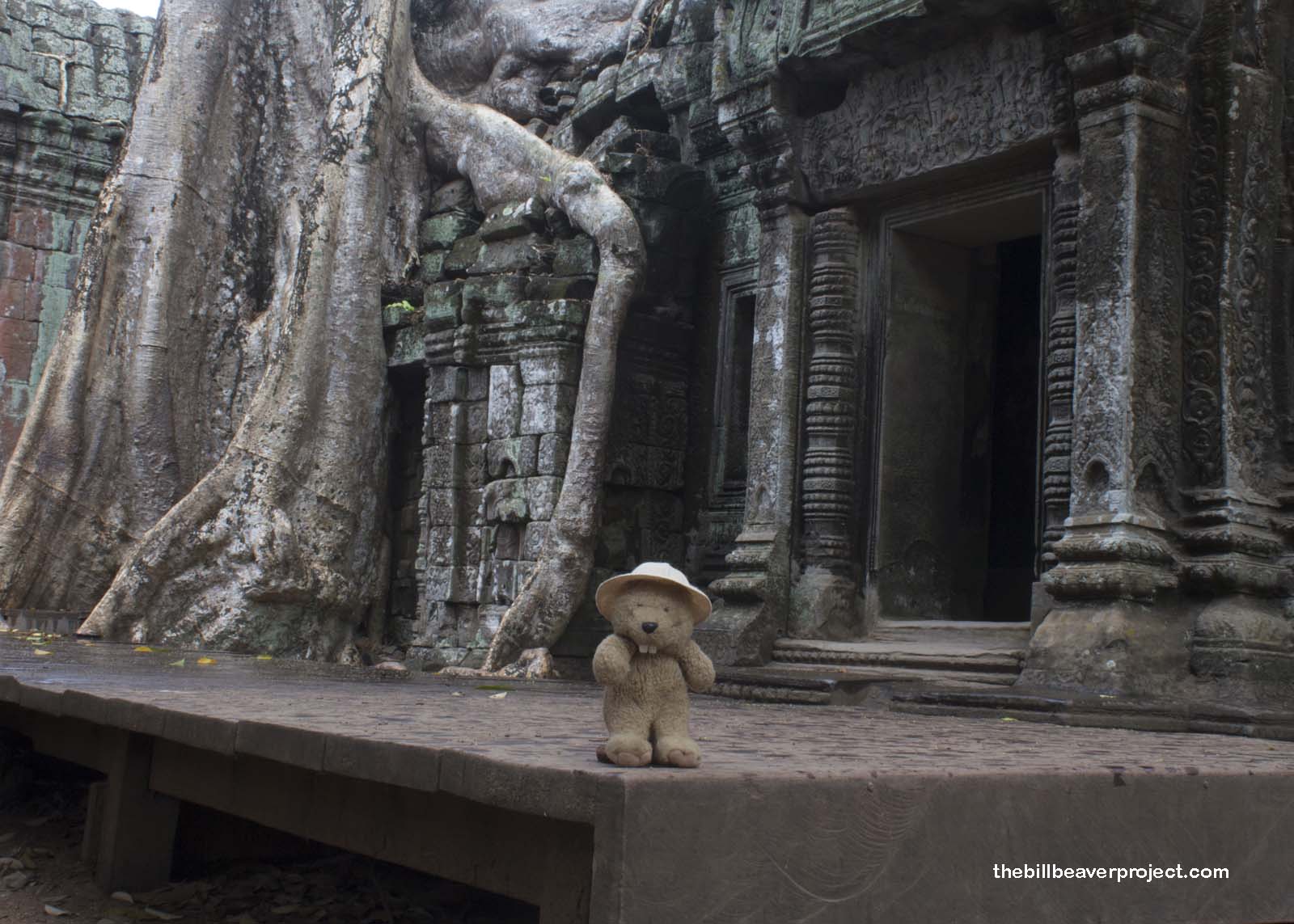 |
As closing time approached, we took a moment to appreciate a small door framed by the roots of a magnificent strangler fig! Though signs everywhere reminded us that this door was featured in the film Tomb Raider, I think it was magnificent enough on its own without the Hollywood glitz!
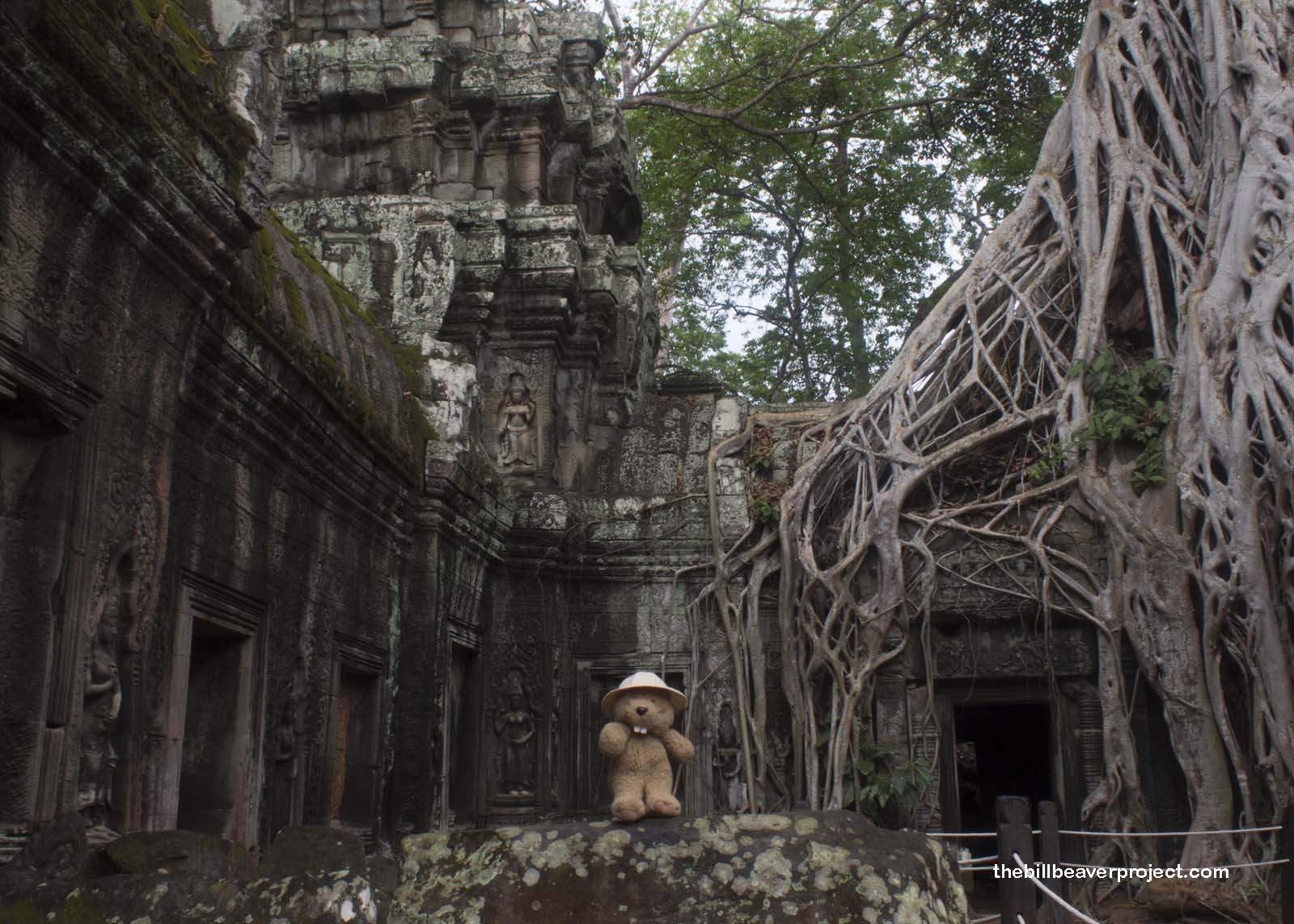 |
At the close of Ta Prohm, Mu Sab and I climbed back in a tuk-tuk to return to downtown Siem Reap. As darkness fell, we went out for a stroll in the Art Center Night Market to the shouts of “Apsara! Apsara!” from the artists selling likenesses of the Celestial Dancer! There were salons of toe-nibbling fish and what I hoped were not real elephant tusks, but despite the shadiness of the merchandise, it was a charming place to explore with cute street lamps and illuminated bridges over the Siem Reap River!
Across the river, we dined in luxury at the Yellow Mango Gallery, Cafe, and Bar, where I sampled delicious amok (steamed, curried fish) overlooking the river, at the exorbitant price of five dollars! Far below, a vendor cart full of durians sped by! It was too late for me to catch one, but perhaps tomorrow, when we journey into the more remote reaches of the province, there will be more!
Réatri suŏ sdei!

 Last Leg of the Trip |
Total Ground Covered: 26.1 mi (42.0 km) |
 Next Day |
